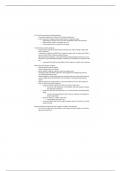Lecture notes
Biol 105 Cell Communication Notes
- Module
- Bio 105
- Institution
- Queens College
This is a comprehensive and detailed note on Chapter 7;Cell communication for Biol 105. *Essential Study Material!! *For you, at a price that's worth it!!
[Show more]




